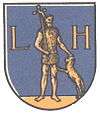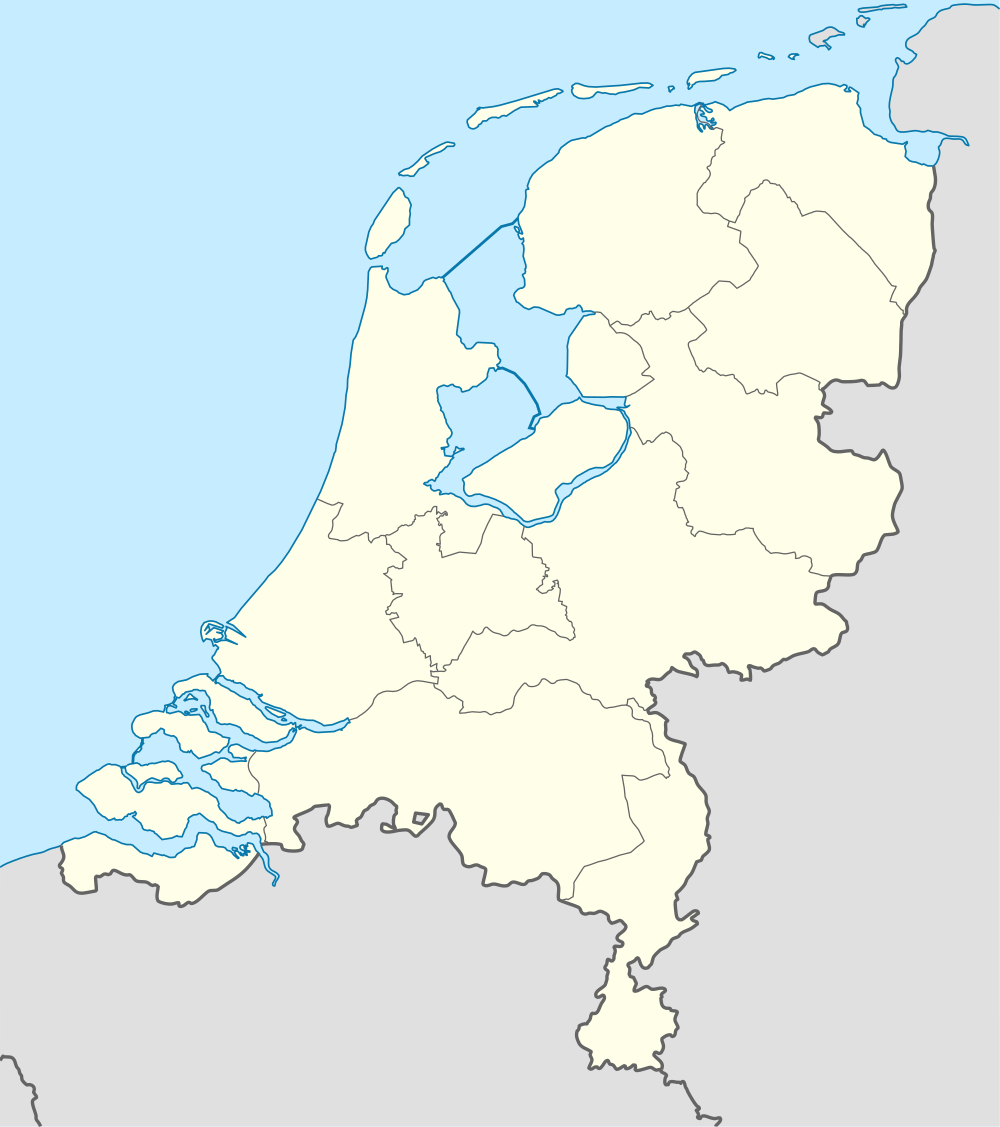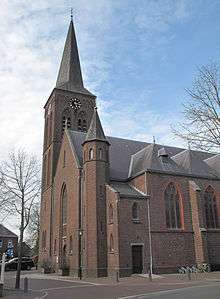Meterik
Meterik (Limburgish: De Mieëterik) is a village in the Dutch province of Limburg. It is located in the municipality of Horst aan de Maas, bordering rich farmland to the north and a moor called De Peel to the west. Meterik is located along a brook, the Kabroekse beek, which provides fertile grazing lands.
Meterik | |
|---|---|
Village | |
 Coat of arms | |
 Meterik | |
| Coordinates: 51°27′18.9″N 6°1′29.7″E | |
| Country | Netherlands |
| Province | Limburg |
| Municipality | Horst aan de Maas |
| Population (2019) | 1,627 |
On 1 January 2019, Meterik had 1627 inhabitants. Meterik is the ancestral home of astronomer Peter Jenniskens. The village is known as a haven for temporary workers for seasonal work in the agricultural sector. Currently many of the workers are from Bulgaria and Romania.
History
The area has been inhabited since prehistoric times. Before the Weichselian glaciation, hunter gatherers of the paleolithic frequented the heathlands. After the glaciation hunter gatherers of the mesolithic (10,000-5,300 BC) were in the area based on stone tools found. Slash and burn farming came to the region at the start of the neolithic around 5500 BC, with Aegean Neolithic Farmers of the Bandkeramic (linear pottery) culture. Around 2900, the Bronze Age and increased mobility from the domestication of the horse brought farmers of the Corded Ware culture and the proto-indo European language to the area. Languages evolved from Northwestblock (Hilversum culture 1850-1650 BC), Italo/Celtic (Tumulus culture 1600-1200 BC) and proto Celtic (Urnfield culture 1300-750 BC) cultures of the Bronze Age. The Iron Age arrived with farmers of the proto Celtic Hallstatt culture (800-450 BC) and Celtic La Tène culture (450-50BC). The region was part of the Roman empire (50 BC - 456 AD), with the influx of yet other people. After 515 AD, the area was part of Frankish Austrasia, the Carolingian empire and the Holy Roman Empire. Farmers in the area still moved from place to place in search of fertile ground.
Meterik originated from scattered farms surrounding an open field, as have the communities of Schadijk (Limburgish: De Schaak) to the north, and Middelijk (Limburgish: Middelik) and Veld-Oostenrijk (Limburgish: Osterik) in the east. In the Middle Ages (after 1100 AD) the area became part of the County of Guelders. A feudal system of agriculture developed, with farming areas with moving farms, that later developed into the communities recognized now surrounding the open field. Peat from the moor was used to fertilize the land, raising its elevation by several meters over time. In 1326, the nearby castle Huis Ter Horst was founded, but rights to the lands moved hands. At one point the northern part of the field near Schadijk was in hands of the Van Mirlaer (Meerlo) family, the southern and eastern parts in hand of the owners of the ter Horst castle. Only in the 19th century, with political changes after the French conquest in 1794 and foundation of the United Kingdom of the Netherlands [1], did the feudal system of moving farms settle into a number of family-owned farms. Those family names are still transmitted to later generations in the form of an informal Limburgish name that many locals use. The invention of artificial fertilizer subsequently led to the agricultural development of the heathlands surrounding the field.
Meterik became a nucleated village at the end of the 19th century, when local farmers obtained permission to establish a church under the condition that they themselves provided income for the priest. Subsequently, a church was established, a house for the priest, and a windmill was brought to the village to generate income for the priest.
Church

The Church of Meterik, the Saint John the Evangelist, was built in 1899 designed by the architect Caspar Roermond Franssen. The first priest arrived in 1904. In 1922 his son Joseph Franssen enlarged the design of the Church, as the early chapel had become too small.
Parish
The Polish, who have settled in large numbers in North Limburg and North Brabant, have their own parish since 2006. It is a so-called categorical parish, which is not bound to a region, but to a group of people. The Polish parish has a Polish priest.
External links
- (in Dutch) Website Village Council Meterik
- (in Dutch) Website Windmill in Meterik
References
- H. Knippenberg The incorporation of Limburg in the Dutch state, Dordrecht: Springer, 1999, p. 39-60. https://doi.org/10.1007/978-94-011-4293-9_3